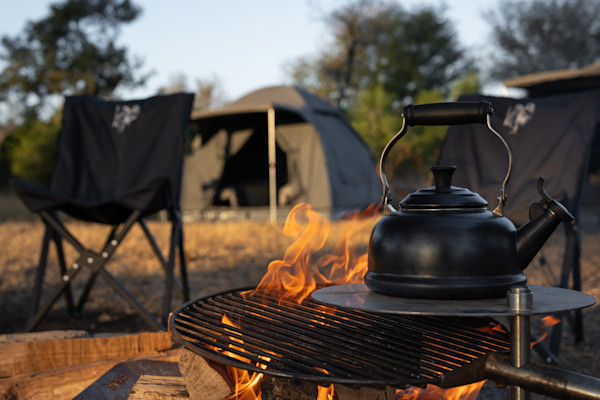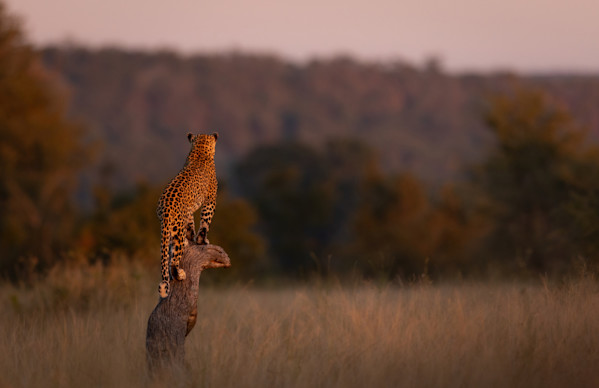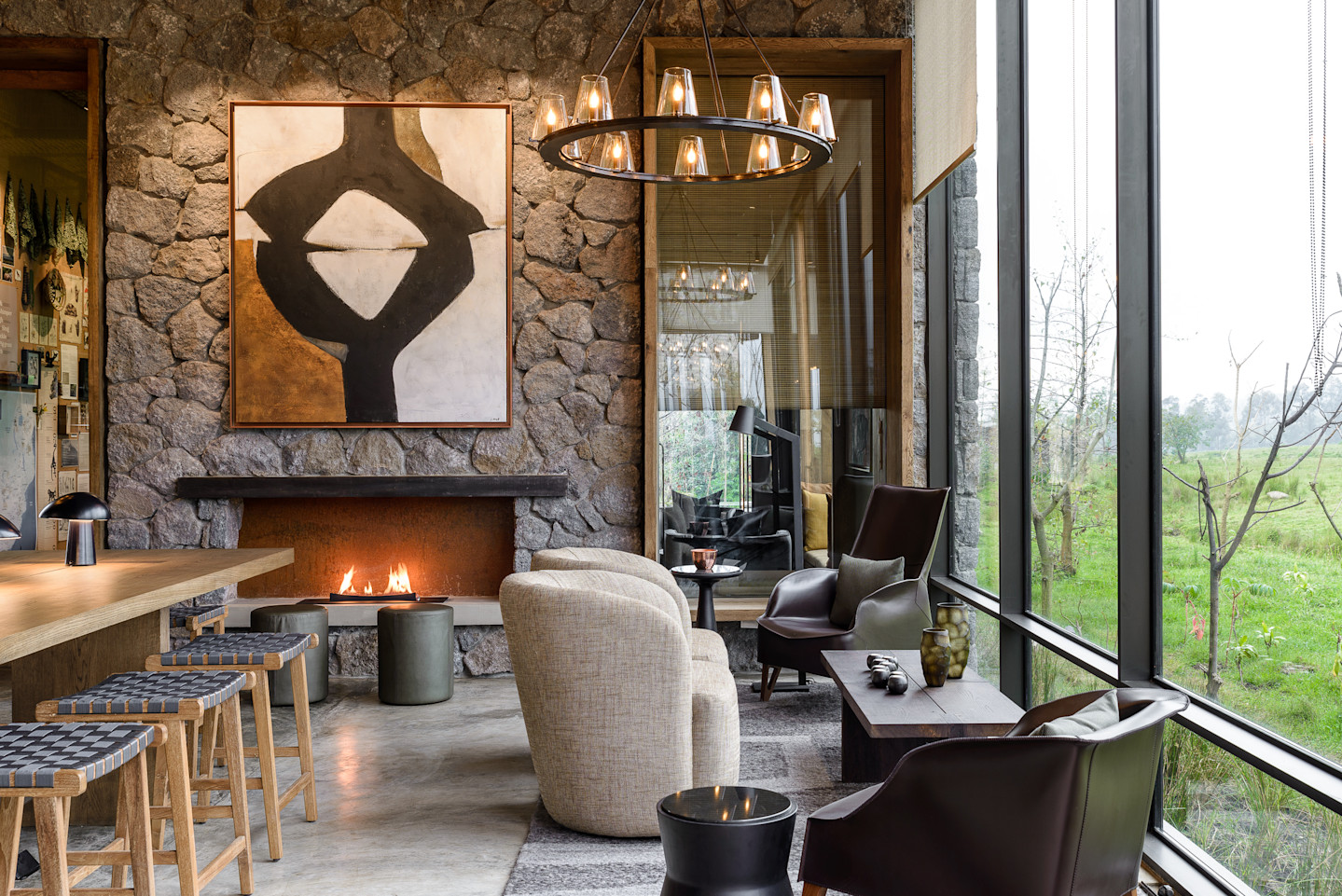
October 2021
Lodges and Camps
Community
Singita Volcanoes National Park - a rich visual African landscape
in Lodges and CampsShare:
Singita Volcanoes National Park - a rich visual African landscape
Singita’s design ethos is aligned with our 100-year purpose, always placing sustainability at the forefront of design and creative processes. This finds various forms – from building with a view to lighten our impact on the earth, to creating spaces that not only respect the cultures of our locations but that reflect and support the enterprises of local artists and makers.
Context and creativity
In the design of Singita Kwitonda Lodge, and Kataza House, its neighbouring private villa, our design team, comprising longstanding interior design partners Cécile & Boyd and our inhouse creatives put together a concept that honours the lush and unique landscape as well as the rich craft heritage of Rwanda. As our first lodge in the country, it was important to ensure that we paid homage to the natural beauty of the location. This took the form of drawing overarching inspiration from the design and art heritage of Rwandan culture but also sourcing and commissioning pieces by local craftspeople.

Singita Kwitonda Lodge and Kataza House pay homage to the soul, landscape and artistic skill of Rwanda and its people
As visual references for the design concept, Cécile & Boyd drew on Rwandan culture, landscape and daily life to impart a sense of place on the space. The palette and materials (rock, metal, mud, grass, and wood) speak to the dense jungle foliage and volcanic makeup of the location, while the decorative elements allude to various elements that make Rwanda unique - from the iconic mountain gorilla (whose presence inspired the strong but nurturing atmosphere of the lodge) to the rich craft and tribal heritage.
The result is a pared-back contemporary interior – bold and strong, but warm - which has a definite African identity. “The idea was to provide guests with a cosy, restful and contemplative retreat from which to experience the wonder of gorillas in Rwanda,” says Geordi de Sousa Costa of Cécile & Boyd.

WATCH to see what makes Singita Kwitonda special - from its quiet, nurturing energy, and beautiful scenery to the talented artisans who have contributed their talent to Singita's spaces here
Connecting the dots
Once the concept had been conceived, it was time to see it come to fruition, but this did not come without challenges. For the initial installation, the creative team worked closely with the local procurement office in Kigali to find artisans based on the design direction. “This was a challenging task, in that we were unable to source items ourselves and poor internet access in Rwanda for artisans and craftsmen made it hard to reach them. This meant that the procurement team on the ground was essential in connecting us with suppliers and manufacturers in the region, to ensure the designs were realised,” says Sacha Pagani, a member of the Singita design team.
Always aiming to use more local artisans, crafters, manufactures and suppliers where possible, there are various hurdles to overcome to increase the scope. “We persevere as best we can to make sure that the local community is represented within the lodge as much as possible, while speaking to the identity of Singita as a brand,” adds Pagani.


Representing the artistic talent of Rwanda, and the continent, Singita Kwitonda and Kataza House showcase skilfully made decorative and functional design by artisans from around Africa
The art in the everyday
The artisanal skill and excellence of traditional craft often comes through in everyday items, as well as art. The basketry throughout the lodge is a nod to the Tutsi tradition - and is made from plants (bamboo, grass, cane, reed, raffia, and banana leaves) abundant throughout the region’s volcanic and mountainous landscape. Basketry has been incorporated in various ways – from the obvious (baskets, chairs and rugs) to more subtle inclusions in light fittings and more symbolically via references to basketry motifs in art and feature furniture items.
A strong 70s inspired geometric slant can be felt in the silhouettes and motifs of the art and furniture and is both a nod to the hairstyles of the Hutu royals and unmarried suitors called “Amasunzu” as well as a more symbolic expression of strength and solidity.
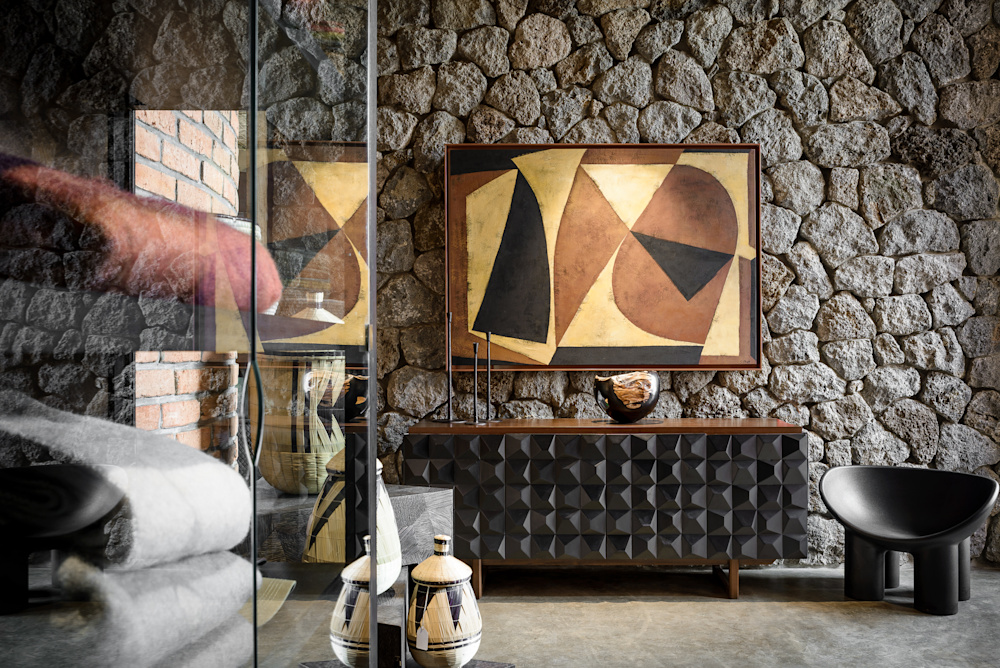
Drawing on the bold and elemental colour palette, and materials native to this region, the design of the lodge is simultaneously powerful and yet peaceful
Throughout the spaces you’ll find bold contemporary mixed-media artworks (sculptural and wall art) by prominent artists from around Africa – such as striking paintings by Collin Sekajugo and Sarah Pratt, mixed-media hangings by Sanaa Gateja and Inzuki Designs, and sculpture by Adam Birch - as well as more tribally inspired works (using the medium of cow dung which is used to create pieces called “Imigongo”).
Ceramics crafted by local artisans using clay locally sourced from the hills and the swamps surrounding the property infuse the spaces with a poignant sense of place. You’ll also find pieces by South Africans Chuma Maweni and Madoda Fani, both contemporary ceramic artists.
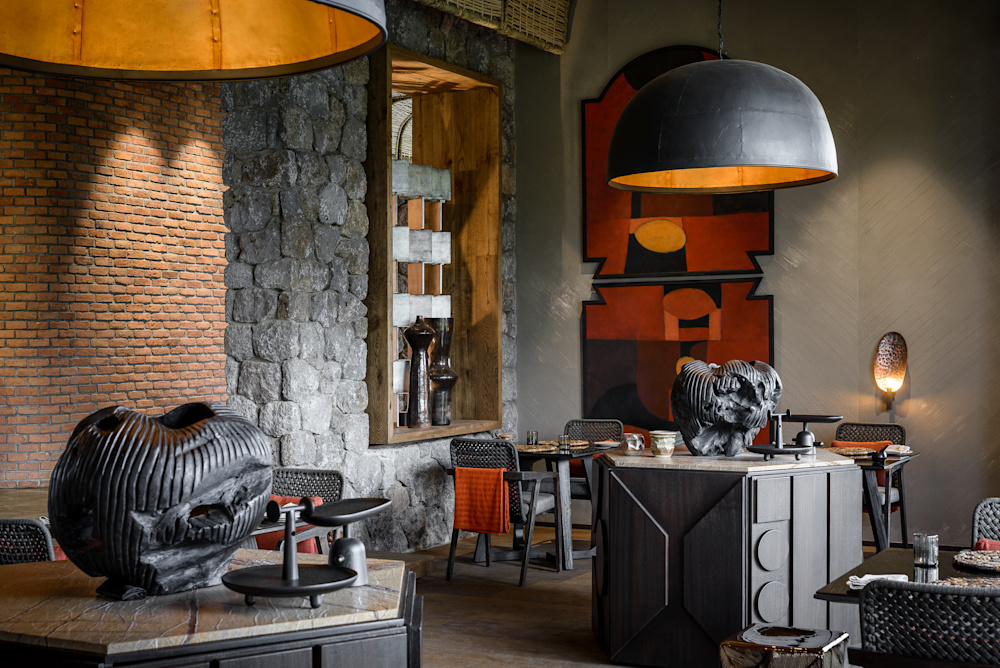
Sculptural, functional and wall art by both well known names and local craftspeople populate the spaces in a dynamic and engaging way
The satisfaction of a vision realised
“During the installation of the lodge, we were able to meet some of the crafters and artisans in person and seeing the variety of their work first hand made a huge difference to how we work with them now, having a greater understanding of their skills,” says Pagani.
Explore the depth of our Rwandan properties here >

By Julia Freemantle
Author
